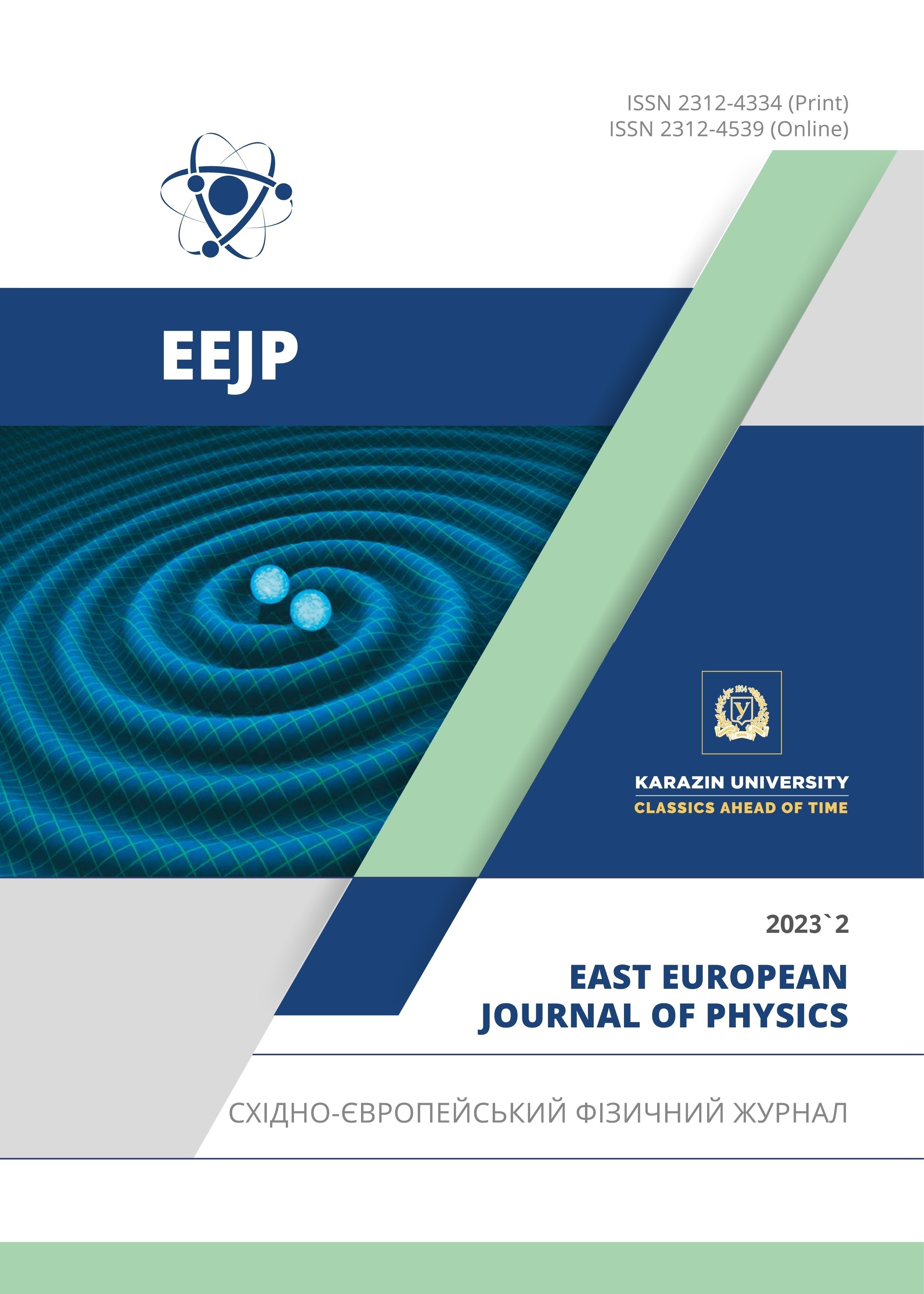Experimental Simulation for Two Optically Filtered Modulation Weights in Laser Diode as a Self-Learning Layer
Abstract
In this study, the response of a nonlinear laser medium is experimentally studied. In the study, a hybrid version of the input layer that multiplies optically and accumulates electrically is compared with a wholly optical version that multiplies and accumulates optically. This medium is subjected to two different paths of optically filtered and attenuated feedback. With such a system, the variation of feedback weight in one of them is tested in correspondence to the second one. Observations for frequency spectra are carried out to simulate the resultant response with an input layer for a neural network based on chaotic carriers. Chaotic laser emission was observed as a function of several control parameters, which are D.C. bias voltage, branch optical attenuation, and feedback strengths based on filtration with fiber Bragg grating. This learning rule is linear in the difference between each input and output of a neuron. This is an enhancing/inhibiting rule. The thresholds are adjusted in such a way that the output of the neuron is either pushed in the same direction as the input (enhancing) or pushed in the opposite direction (inhibiting).
Downloads
References
X. Sui, Q. Wu, L. Jia, Q. Chen, and G. Gu, “A Review of Optical Neural Networks,” IEEE Access, 8, 70773-70783 (2020). https://doi.org/10.1109/ACCESS.2020.2987333
N. Kadakia, “Optimal control methods for nonlinear parameter estimation in biophysical neuron models,” bioRxiv preprint, 2022. https://doi.org/10.1101/2022.01.11.475951
F.P. Sunny, E. Taheri, M. Nikdast, and S. Pasricha, “A Survey on Silicon Photonics for Deep Learning,”ACM Journal on Emerging Technologies in Computing Systems, 17(4), 1-57 (2021). https://doi.org/10.1145/3459009
E. Cohen, D. Malka, A. Shemer, A. Shahmoon, Z. Zalevsky, and M. London, “Neural networks within multi-core optic fibers,” Scientific Reports, 6, 1-14 (2016). https://doi.org/10.1038/srep29080
D.H. Nguyen, and B. Widrow, “Neural Networks for Self-Learning Control Systems,” IEEE Control Systems Magazine, 10(3), 18-23 (1990). https://doi.org/10.1109/37.55119
W.S. Mcculloch, and W. Pits, “A logical calculus of the ideas immanent in nervous activity,” Bulletin of Mathematical Biophysics, 5, 115-133 (1943). https://doi.org/10.1007/BF02478259
R.F. Thompson, “The neurobiology of learning and memory,” in: Clinical neuropsychology and brain function: Research, measurement, and practice, edited by T. Boll, and B.K. Bryant (American Psychological Association, Vashington, 1988). pp. 61 83, https://doi.org/10.1037/10063-002
T. Staff, “Deep learning - 10 breakthrough technologies 2013,” MIT Technology Review, 2013.
F.-C.F. Tsai, C.J. O’Brien, N.S. Petrović, and A.D. Rakić, “Analysis of optical channel cross talk for free-space optical interconnects in the presence of higher-order transverse modes,” Applied Optics, 44(30), 6380-6387 (2005). https://doi.org/10.1364/AO.44.006380
R. Clark, L. Fuller, J. Platt, and H.D.I. Abarbanel, “Reduced-Dimension, Biophysical Neuron Models Constructed From Observed Data,” Neural Comput. 34(7), 1545-1587 (2022). https://doi.org/10.1162/neco_a_01515.
A. Uchida, Optical Communication with Chaotic Lasers: Applications of Nonlinear Dynamics and Synchronization, (Wiley‐VCH Verlag GmbH & Co., KGaA, 2012).
M. Ahmed, A. Bakry, and F. Koyama, “Application of Strong Optical Feedback to Enhance the Modulation Bandwidth of Semiconductor Lasers to the Millimeter-Wave Band,” International J. Physical and Mathematical Science, 9(1), 17-22 (2015). https://doi.org/10.5281/zenodo.1337753
D.R. Hjelme, and A. Mickelson, “On the theory of external cavity operated single-mode semiconductor lasers,” IEEE Journal of Quantum Electronics, 23(6), 1000-1004 (1987). https://doi.org/10.1109/JQE.1987.1073460
G.P. Agrawal, “Effect of gain nonlinearities on period doubling and chaos in directly modulated semiconductor lasers,” Applied Physics Letters, 49(16), 1013-1015 (1986), https://doi.org/10.1063/1.97456
V. Bindu, and V.M. Nandakumaran, “Chaotic encryption using long-wavelength directly modulated semiconductor lasers,” Journal of Optics A: Pure and Applied Optics, 4(2), 115-119 (2002). https://doi.org/10.1088/1464-4258/4/2/301
G.P. Agrawal, and N.K. Dutta, Semiconductor Lasers, Second Edition, (Dordrecht: Kluwer Academic Publishers, 1993).
F.-Y. Lin, and J.-M. Liu, “Nonlinear Dyanmic of Semiconductor Laser with Delayed Optoelectronic Feedback,” IEEE Journal of Quantum Electronics, 39(4), 562-568 (2003), https://doi.org/10.1109/JQE.2003.809338
G. Giacomelli, M. Calzavara, and F.T. Arecchi, “Instabilities in a semiconductor laser with delayed optoelectronic feedback,” Optics Communications, 74(1-2), 97-101 (1989). https://doi.org/10.1016/0030-4018(89)90498-7
H. Erzgraber, B. Krauskopf, D. Lenstra, A. Fischer and G. Vemuri, , Phys Rev E Stat Nonlin Soft Matter Phys, 76, no. 2, (2007), https://doi.org/10.1103/PhysRevE.76.026212
A. Hemed, Ph.D. dissertation, University of Baghdad-Iraq, 2011.
V.L. Kalyani, and V. Sharma, “Different types of optical filter and their application,” Journal of Management Engineering and Information Technology, 3(3), 12-17 (2016).
A.M. Suhail, B.T. Chead, H.J. Kbashi, and A.A. Hemed, “Studying the effect of variant optoelectronic feedback on chaos generation,” Atti della Fondazione Giorgio Ronchi, Chaos, Anno, LXV(2), 147-154 (2010).
Z.R. Ghayib, Ph.D. dissertation, College of Education at Mustansiriyah University, 2022.
A. Hemed, and Z.R. Gaiab, in: 2022 International Conference on Computer Science and Software Engineering CSASE, Duhok, Kurdistan Region – Iraq, 2022. https://doi.org/10.1109/csase51777.2022.9759612
G. Fennessy, and Y. Vorobeychik, “Optical Neural Networks,” https://doi.org/10.48550/arXiv.1805.06082
Copyright (c) 2023 Dhuha Raad Madhloom, Ayser A. Hemed, Suha Musa Khorsheed

This work is licensed under a Creative Commons Attribution 4.0 International License.
Authors who publish with this journal agree to the following terms:
- Authors retain copyright and grant the journal right of first publication with the work simultaneously licensed under a Creative Commons Attribution License that allows others to share the work with an acknowledgment of the work's authorship and initial publication in this journal.
- Authors are able to enter into separate, additional contractual arrangements for the non-exclusive distribution of the journal's published version of the work (e.g., post it to an institutional repository or publish it in a book), with an acknowledgment of its initial publication in this journal.
- Authors are permitted and encouraged to post their work online (e.g., in institutional repositories or on their website) prior to and during the submission process, as it can lead to productive exchanges, as well as earlier and greater citation of published work (See The Effect of Open Access).








